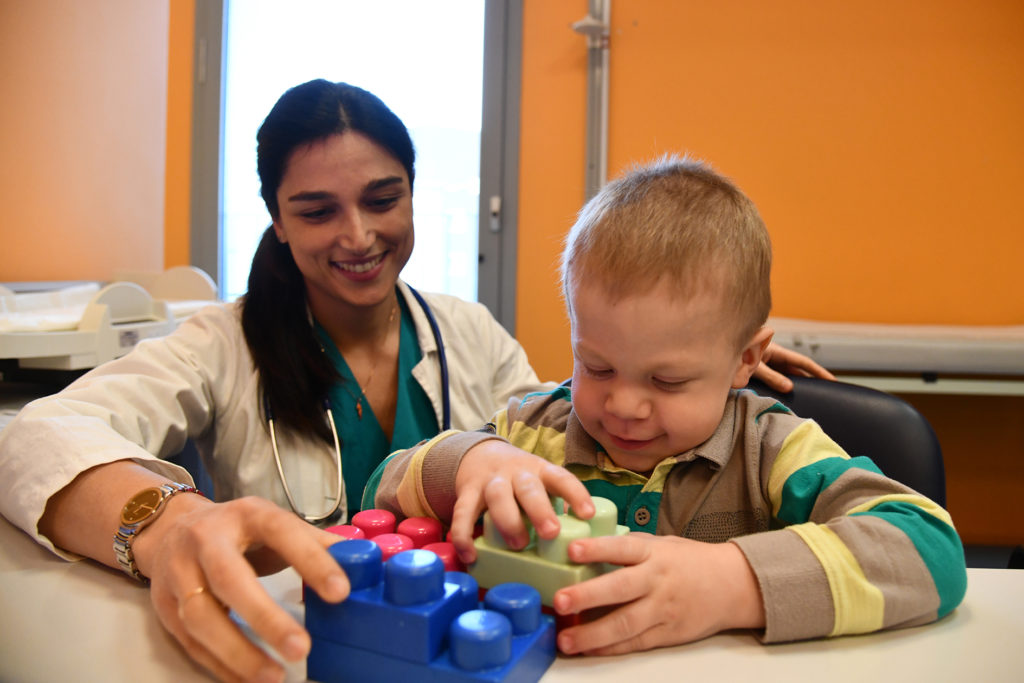At the San Raffaele-Telethon Institute in Milan researchers are working to apply gene therapy, an approach that has already given important results, to even more diseases optimizing development times and costs.

Research never stops and what works to cure a disease could also act as a driving force for other pathologies with similar mechanisms, reducing development times and costs and thus offering ever greater opportunities for treatment. It is with this spirit that the researchers of the San Raffaele-Telethon Institute in Milan got to work after the important results obtained thanks to the gene therapy strategy developed in their laboratories and subsequently acquired by an industrial partner, who undertook to bring it to the market.
After the approval of Strimvelis in 2016 for the treatment of the rare immunodeficiency ADA-SCID, in 2020 it was the turn of Libmeldy, made available in Europe as a drug for children with a serious neurodegenerative disease, metachromatic leukodystrophy. This same approach, which is based on the correction of blood stem cells using a viral vector, is yielding promising results also for other diseases for which research has been ongoing for years. However, as explained by Francesca Tucci, Pediatrician of the Institute's Clinical Research Unit directed by Alessandro Aiuti, «there are many diseases still without a cure and we tried to envision how to put to good use what we have learned over the years in order to offer new opportunities in the shortest time possible. Therefore, we have identified pathologies with mechanisms and symptoms similar to some of those studied so far in order to tackle them with an "in parallel" approach: this means that we will use the same gene transfer system and, as far as possible, the same safety and effectiveness tests. The only player that will change is the transferred gene, which is of course specific for each disease. In this way we plan to optimize both the duration and costs of the experiments and to get to human clinical trials faster, hopefully within two to three years".
For this new "platform", which was also presented to the Italian and European regulatory authorities, the researchers choose three rare lysosomal storage diseases, all characterized by an enzyme deficiency that results in the failure to dispose of toxic substances: mucopolysaccharidosis types 4A and 4B and alpha-mannosidosis. «This accumulation – explains Tucci – is particularly detrimental for the skeleton and leads to deformities, pain and severe motor disability. Based on the positive results already obtained on the first patients with another storage disease that also seriously affects the bones, Hurler's syndrome, we believe that our gene therapy approach could also provide benefits in the case of these rare disease, which still lacks a definitive treatment. Indeed, the bone is a very difficult organ to reach because it is scarcely supplied with blood: gene therapy, on the other hand, allows overcoming this obstacle and to supply the enzyme precisely where it is needed to carry out its detoxifying action, thanks to the progeny of the genetically corrected stem cells.
In rare cases, bone marrow transplantation has been attempted as a definitive cure but, besides not having a clear therapeutic indication, it also has important limitations: on the one hand, the difficulty in finding a compatible donor and on the other a partial efficacy, especially at the skeletal level. Gene therapy would have the great advantages of using the patient's own cells thus avoiding rejection and of supplying potentially physiological levels of enzyme, if not more.
«We hope that this new model will help us addressing the needs of a greater number of patients awaiting treatment, in the shortest possible time» - continues Francesca Tucci, who arrived at SR-Tiget in 2016 after graduating in Medicine, specializing in Pediatrics at the University of Naples and after a period as a doctor in training at the Gaslini hospital in Genoa and in Uganda. «I have always wanted to study pediatric blood diseases, at the beginning especially tumors such as lymphomas and leukemias. Then I found my ideal working dimension in Milan, where true translational research is carried out: from the laboratory bench to the patient's bed and vice versa, developing innovative therapies that can really give children with serious and potentially fatal diseases a new life opportunity. I still remember as it was yesterday the first time we infused the gene therapy-corrected stem cells into a child with Hurler syndrome, as well as the difficult confrontation with those parents we had to tell that we could not cure their child. Even gene therapy has its limits and when the disease is too advanced, especially if there is a compromised nervous system, it cannot change its course. We hope that one day newborn screening will allow us to diagnose all these diseases at birth and to be able to intervene promptly, leaving no one behind. Anyway, even when we give the answers that we would never want to, we know that research never stops and this always leaves a glimmer of space open: never say never».